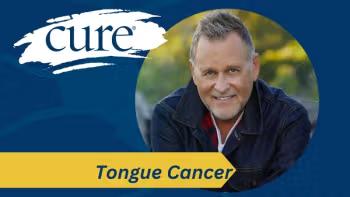
Tasigna Shows Efficacy for Elderly Patients With Philadelphia-Positive ALL
Tasigna in combination with chemotherapy elicited a complete hematological remissions (CHR) in 87 percent of elderly patients with newly diagnosed Philadelphia-positive acute lymphoblastic leukemia (Ph-positive ALL).
Tasigna (nilotinib) is a second-generation tyrosine kinase inhibitor (TKI) approved in two settings: for the treatment of patients with newly diagnosed Ph-positive chronic myeloid leukemia (CML) in chronic phase and for patients with Ph-positive CML in chronic phase and accelerated phase who have progressed on imatinib.
Phase 2 data presented at the annual meeting of the American Society of Hematology (ASH) show that treatment with Tasigna in combination with chemotherapy elicited complete hematological remissions (CHR) in 87 percent of elderly patients with newly diagnosed Philadelphia-positive acute lymphoblastic leukemia (Ph-positive ALL).
Oliver G. Ottmann, a professor at Goethe University in Frankfurt, Germany, who presented the results of a planned interim analysis, noted during a press briefing Sunday that while the combination of chemotherapy and TKIs is the gold standard in the treatment of Ph-positive ALL, elderly patients who are not eligible for stem cell transplantation (SCT) experience poor outcomes with or without addition of a TKI.
Individuals on the trial were treated with an age-adapted, low-intensity chemotherapy regimen developed specifically for patients with Ph-positive ALL aged 55 and older. After induction, 45.5 percent of patients achieved major molecular response (MMR), while 11.4 percent had undetectable BCR-ABL1 transcripts. During consolidation, 79 percent of patients had MMR and 26.3 percent had undetectable BCR-ABL1 transcripts.
Patients on the trial ranged from 55 to 85 years of age with a median age of 65 years. Eligible patients were defined as Ph-positive or BCR-ABL1-positive who had not received prior treatment except with corticosteroids, single-dose vincristine or three doses of cyclophosphamide.
As central nervous system involvement can be a problem in ALL, Ottmann said, such involvement was not defined as exclusion criteria. However, no patients with CNS involvement were enrolled.
Patients were treated for up to two years. As of August 13, 2014, 47 patients on the trial were evaluable for efficacy. In total, 87 percent of those patients achieved CHR while 2 patients had progressive disease and one person died upon induction. Three patients discontinued treatment early because of lipase elevation, thromboembolism and an unknown cause.
“The combination of nilotinib with this age-adapted chemotherapy is highly effective,” said Ottmann. “We do have quite a reasonable overall survival estimate at two years of just more than 70 percent.” According to Ottmann and colleagues, overall survival estimates showed that about two-thirds of patients would be alive after 30 months. Ottmann said the rate of overall survival would be slightly higher (72.7 person) if patients underwent stem cell transplant.
In Europe, Ottmann said, “allogeneic transplant is still considered an option, even in this elderly population.” The completion of this trial and further trials will hopefully provide an answer as to its benefit. At the time the researchers compiled their conference abstract, they noted that 43 patients were evaluable for safety assessment, and that the tolerability of the combination was acceptable. In total at that time, 34 serious adverse events had been reported: 11 during induction, 16 among 37 patients during consolidation, six during maintenance and one after discontinuation. Infectious events and neutropenic fever were the most commonly observed serious adverse events. Other serious adverse events included cardiovascular, hepatic, metabolic, neurologic and renal events.




